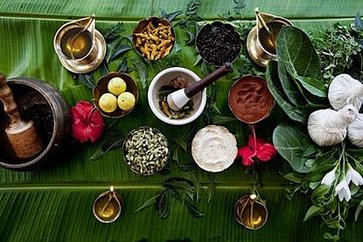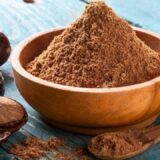Ayurvedic Lifestyle Tips for Modern Living
Ayurveda, an ancient Indian system of medicine, is rooted in the belief that optimal health stems from a harmonious balance between the mind, body, and spirit. Unlike Western medicine, which often focuses on treating specific ailments, Ayurveda promotes a holistic approach to wellness, emphasizing prevention and overall well-being.
At its core, Ayurveda recognizes the interconnectedness of individuals with nature and the universe. By understanding one’s unique constitution or dosha (Vata, Pitta, or Kapha), Ayurveda offers personalized guidance on diet, lifestyle, and routines to restore and maintain balance.
Incorporating Ayurvedic principles into daily life can significantly enhance overall health and quality of life. By aligning our actions with the rhythms of nature, we can cultivate inner peace, boost immunity, and experience a profound sense of well-being.
Understanding Your Dosha is a Must
Ayurveda posits that the human body is a microcosm of the universe, composed of five elements: space, air, fire, water, and earth. These elements combine to form three fundamental energies or doshas: Vata, Pitta, and Kapha.
The Three Doshas
- Vata (air and space): Characterized by movement, creativity, and lightness. Vata individuals tend to be enthusiastic, energetic, and adaptable but can also experience anxiety, dryness, and irregularity.
- Pitta (fire and water): Associated with transformation, metabolism, and digestion. Pitta individuals are often intelligent, focused, and leaders but can also be prone to anger, irritability, and inflammation.
- Kapha (water and earth): Representing structure, stability, and lubrication. Kapha individuals are typically loving, patient, and grounded but can also experience sluggishness, weight gain, and emotional inertia.
Identifying Your Dosha
While most people have a dominant dosha, everyone possesses all three in varying proportions. To determine your predominant dosha, consider your physical, mental, and emotional characteristics. You can also take online quizzes or consult an Ayurvedic practitioner for a more in-depth assessment.
Understanding your dosha is crucial as it provides a roadmap for balancing your constitution. By recognizing your tendencies and vulnerabilities, you can make informed choices about diet, lifestyle, and routines to promote optimal health and well-being.
How to Live Ayurvedically
Discover some simple but powerful Ayurvedic lifestyle tips that can transform your health and well-being.
1. Daily Routine (Dinacharya)
A cornerstone of Ayurvedic wellness, Dinacharya emphasizes the importance of establishing a consistent daily routine that aligns with the natural cycles of the day and your unique constitution. By incorporating these practices into your life, you can enhance digestion, boost immunity, improve sleep, and cultivate overall balance.
The Significance of a Consistent Routine
Regularity is key in Ayurveda. A consistent daily routine helps to regulate your internal clock, optimize digestion, and promote emotional stability. When your body operates in harmony with nature’s rhythms, you experience greater vitality and resilience.
Key Practices
- Wake up early and establish a morning routine: Rising before sunrise (around 6 am) is ideal to synchronize with nature’s energy. This allows for a peaceful start to the day and optimal digestion.
- Tongue scraping and oil pulling: These oral hygiene practices help remove toxins from the mouth, improve breath, and support overall oral health.
- Abhyanga (self-massage with oil): Massaging your body with warm oil nourishes the skin, relaxes muscles, and balances the doshas. Choose an oil suitable for your constitution (e.g., sesame oil for Vata, coconut oil for Pitta, sunflower oil for Kapha).
- Proper hydration and breakfast: Start your day with a glass of warm water with lemon or honey. A nourishing breakfast, tailored to your dosha, provides essential energy and supports digestion.
2. Diet and Nutrition (Aahar)
Ayurveda places great emphasis on diet as a cornerstone of health. The principle is to nourish the body while balancing the doshas.
Principles of Ayurvedic Nutrition
- Balance: The key to a healthy diet is balance. This involves consuming a variety of foods in moderation, ensuring a harmonious blend of tastes, textures, and qualities.
- Seasonal Foods: Ayurveda emphasizes eating foods that are in season. Seasonal produce is believed to be fresher, more flavorful, and easier to digest.
- Digestion: Proper digestion is essential for optimal health. Ayurveda recommends eating slowly, chewing food thoroughly, and creating a peaceful environment for meals.
Recommended Foods for Each Dosha
- Vata: Warm, moist, and grounding foods are beneficial. Include plenty of ghee, warm soups, and cooked vegetables. Avoid dry, cold, and light foods.
- Pitta: Cooling, sweet, and bitter foods help balance Pitta. Incorporate coconut, coriander, and cucumber into your diet. Avoid spicy, sour, and fermented foods.
- Kapha: Light, dry, and warm foods are ideal for Kapha individuals. Enjoy pungent spices, bitter greens, and barley. Limit heavy, oily, and sweet foods.
Tips for Mindful Eating and Meal Timing
- Mindful Eating: Pay attention to your body’s hunger cues. Eat slowly and savor each bite. Avoid distractions like screens during meals.
- Meal Timing: Ayurveda recommends eating regular meals at specific times. This helps regulate digestion and metabolism.
- Combination Foods: Be mindful of food combinations. Certain foods are believed to be incompatible and can disrupt digestion.
By following these Ayurvedic principles, you can optimize your diet for better health, energy, and overall well-being.
3. Exercise and Movement
Ayurveda recognizes the importance of physical activity for overall well-being. Regular exercise helps to maintain balance among the doshas, improve circulation, strengthen the body, and enhance mental clarity.
Importance of Regular Exercise
- Balances Doshas: Exercise helps to regulate the doshas by promoting circulation, digestion, and elimination.
- Strengthens the Body: Physical activity builds muscle, improves bone density, and enhances overall physical strength.
- Improves Mental Clarity: Exercise reduces stress, improves mood, and enhances cognitive function.
Types of Exercises for Different Doshas
Vata: Gentle, grounding exercises like walking, yoga, and tai chi are beneficial. Avoid intense, high-impact activities.
- Pitta: Cooling and calming exercises such as swimming, cycling, and yoga are recommended. Avoid competitive and aggressive sports.
- Kapha: Stimulating and energizing exercises like dancing, hiking, and martial arts can help balance Kapha. Avoid sedentary activities.
Incorporating Yoga and Other Mindful Practices
Yoga is an integral part of the Ayurvedic lifestyle. It combines physical postures, breathing exercises, and meditation, offering a holistic approach to health. Other mindful practices like tai chi, qigong, and walking meditation can also complement your exercise routine.
Remember, the key is to choose exercises that you enjoy and that suit your body type and energy levels. Consistency is more important than intensity.
4. Stress Management and Mental Health
Ayurveda offers a comprehensive approach to managing stress and promoting mental well-being. It focuses on restoring balance to the mind and body, enabling individuals to cope with life’s challenges with resilience.
Ayurvedic Approaches to Managing Stress
Lifestyle Balance: Prioritizing sleep, a healthy diet, regular exercise, and a consistent daily routine are fundamental to stress management.
- Sensory Stimulation: Engaging the senses through aromatherapy, music, and nature can be calming and grounding.
- Herbal Remedies: Certain Ayurvedic herbs like Ashwagandha, Brahmi, and Shatavari are known for their stress-relieving properties.
- Panchakarma: This Ayurvedic detoxification and rejuvenation therapy can be beneficial for chronic stress.
Techniques for Mental Clarity and Emotional Balance
- Meditation and Mindfulness: Regular meditation helps quiet the mind, reduce anxiety, and improve focus.
- Pranayama (Breathing Exercises): Deep breathing techniques like diaphragmatic breathing and alternate nostril breathing can calm the nervous system.
- Yoga: Incorporating yoga postures, breathing exercises, and meditation into your routine can promote overall well-being.
- Abhyanga (Self-Massage): Massaging your body with warm oil can relax muscles, reduce tension, and improve sleep.
Meditation and Breathing Exercises
Ayurveda emphasizes the power of meditation and breathing exercises to cultivate inner peace and clarity. Some effective techniques include:
- Pranayama: Techniques like Anulom-Vilom (alternate nostril breathing), Bhramari (bee breathing), and Ujjayi (victorious breath) can help balance the nervous system.
- Meditation: Simple mindfulness meditation, focusing on the breath or a mantra, can be practiced daily.
- Visualization: Imagining peaceful scenes or positive outcomes can reduce stress and promote relaxation.
By incorporating these practices into your daily life, you can significantly improve your ability to manage stress, enhance mental clarity, and cultivate a greater sense of emotional balance.
5. Sleep and Rest
In Ayurveda, sleep (Nidra) is considered one of the three pillars of health, along with food (Aahar) and energy conservation (Brahmacharya). It’s a vital process for rejuvenation, restoration, and overall well-being.
Importance of Quality Sleep
- Rejuvenation: Sleep allows the body to repair and rebuild tissues.
- Balancing Doshas: Adequate sleep helps maintain balance among the three doshas (Vata, Pitta, and Kapha).
- Mental Clarity: Sleep is essential for cognitive function, memory, and emotional balance.
- Immunity: Sufficient sleep supports a strong immune system.
Creating a Restful Sleep Environment
- Darkness: Create a dark, quiet, and cool sleep environment.
- Aromatic Relaxation: Use calming scents like lavender or chamomile.
- Comfort: Invest in a comfortable mattress, pillows, and bedding.
- Electronics: Avoid screens at least an hour before bed.
Recommended Sleep Routines and Practices
- Regular Sleep Schedule: Maintain a consistent sleep-wake cycle.
- Evening Routine: Establish a relaxing bedtime routine, such as a warm bath, reading, or gentle yoga.
- Light Dinner: Avoid heavy meals close to bedtime.
- Digestive Fire: Ensure proper digestion by having dinner early.
- Ayurvedic Herbs: Consider herbs like Ashwagandha or Chamomile for sleep support.
- Meditation and Relaxation: Practice calming techniques before bed.
By prioritizing sleep and incorporating these Ayurvedic practices, you can significantly improve your overall health and well-being.
6. Seasonal Adjustments (Ritucharya)
Ritucharya is the Ayurvedic practice of aligning your lifestyle with the natural cycles of the seasons.
By understanding how the changing seasons affect your dosha, you can make appropriate adjustments to your diet, routine, and lifestyle to maintain balance and well-being.
How Seasonal Changes Affect Your Dosha
Each season corresponds to a particular dosha or combination of doshas.
- Spring (Vata/Kapha): As the weather transitions from cold to warm, Vata and Kapha doshas tend to increase.
- Summer (Pitta): The hot and humid weather can aggravate Pitta dosha.
- Autumn (Vata/Pitta): This transitional season can bring imbalances to both Vata and Pitta.
- Winter (Kapha): Cold and dry conditions can exacerbate Kapha dosha.
Adjusting Diet, Routine, and Lifestyle with the Seasons
To maintain balance, Ayurveda suggests making seasonal adjustments to your diet, routine, and lifestyle.
- Diet: Consume foods that counterbalance the predominant dosha of the season. For example, in the summer, opt for cooling and hydrating foods to balance Pitta.
- Routine: Adjust your daily routine to align with the changing daylight hours and weather. For instance, during winter, prioritize warmth and grounding activities.
- Lifestyle: Incorporate seasonal activities into your life. Spend time outdoors in nature, enjoying the specific qualities of each season.
Examples of Seasonal Practices for Balance
- Spring: Detoxify the body, increase physical activity, and incorporate bitter and astringent tastes into your diet.
- Summer: Prioritize hydration, cooling foods, and lighter activities.
- Autumn: Focus on grounding and nourishing practices, such as enjoying warm soups and spending time in nature.
- Winter: Incorporate warming foods, self-massage (Abhyanga), and grounding activities.
By understanding the principles of Ritucharya and making conscious adjustments to your lifestyle, you can enhance your overall health and well-being throughout the year.
7. Detoxification and Cleansing (Panchakarma)
In Ayurveda, detoxification is known as Panchakarma, which translates to “five actions.” It’s a comprehensive approach to purifying the body, mind, and spirit, removing accumulated toxins (known as ama), and restoring balance to the doshas.
Introduction to Ayurvedic Detox Practices
Panchakarma is not merely a physical cleanse but a deep-rooted process aimed at rejuvenating the entire system. It’s believed to enhance immunity, improve digestion, promote mental clarity, and enhance overall well-being.
Common Detox Techniques and Their Benefits
The five primary Panchakarma procedures are:
- Vamana: Therapeutic emesis to cleanse the upper digestive tract.
- Virechana: Therapeutic purgation to cleanse the lower digestive tract.
- Basti: Enema therapy using herbal decoctions to cleanse the colon.
- Nasya: Administration of medicated oils through the nostrils to cleanse the head and sinuses.
- Raktamokshana: Blood purification therapies like bloodletting (rarely used today).
These procedures are typically preceded by a preparatory phase involving oil massages (Abhyanga), sweating (Svedana), and a specific diet to loosen toxins from the tissues.
When and How to Consider a Detox?
Panchakarma is a profound process and should be undertaken under the guidance of a qualified Ayurvedic practitioner. It’s generally recommended during the transition between seasons (spring and autumn) when the body is more receptive to detoxification.
Individuals with chronic illnesses, digestive issues, or those seeking deep-level rejuvenation may benefit from Panchakarma. However, it’s essential to assess one’s overall health and consult with an Ayurvedic doctor before embarking on this journey.
It’s important to note that while Panchakarma offers significant benefits, it’s not a standalone solution. Maintaining a healthy lifestyle, including proper diet, exercise, stress management, and regular self-care, is crucial for long-term well-being.
Incorporating Ayurvedic Herbs and Supplements
Ayurvedic herbs and supplements offer a natural approach to supporting overall health and well-being. However, it’s essential to use them wisely and under proper guidance.
Overview of Common Ayurvedic Herbs and Their Uses
Ayurveda boasts a vast array of herbs, each with specific properties and benefits. Here are a few commonly used examples:
- Turmeric (Curcumin): Known for its anti-inflammatory and antioxidant properties.
- Ashwagandha: An adaptogen that helps manage stress and supports overall well-being.
- Ginkgo Biloba: Supports cognitive function and memory.
- Brahmi: Known for its calming and memory-enhancing properties.
- Triphala: A blend of three fruits used for digestive health.
- Neem: Possesses antibacterial and antifungal properties.
Remember, this is just a small sample, and the right herb for you depends on your specific needs and constitution.
How to Safely Integrate Supplements into Your Routine
- Consult an Ayurvedic Practitioner: An Ayurvedic professional can recommend suitable herbs based on your dosha and health goals.
- Start Low, Go Slow: Begin with small doses and gradually increase as needed.
- Quality Matters: Choose reputable brands with high-quality, authentic herbs.
- Consider Interactions: Inform your healthcare provider about any medications you’re taking, as some herbs may interact.
- Listen to Your Body: Pay attention to how your body responds to the supplements.
Consulting with an Ayurvedic Practitioner
An Ayurvedic practitioner can provide personalized guidance on:
- Identifying your dosha: Understanding your constitution is crucial for selecting appropriate herbs.
- Choosing the right herbs: Based on your health goals and imbalances.
- Determining correct dosages: Ensuring safe and effective use.
- Monitoring progress: Assessing the effectiveness of the herbs and making adjustments as needed.
By working closely with an Ayurvedic practitioner, you can harness the benefits of herbs and supplements while minimizing potential risks.
By combining self-awareness, professional guidance, and consistent effort, you can create a personalized Ayurvedic plan that supports your overall well-being.

























